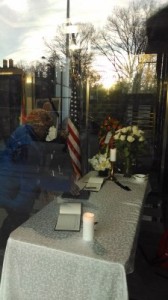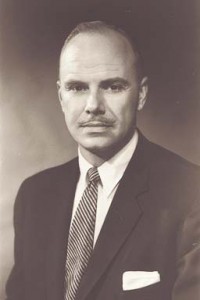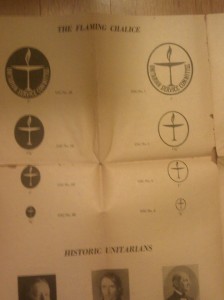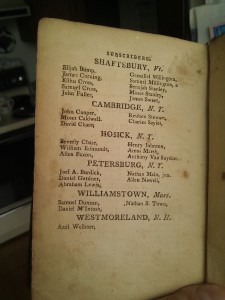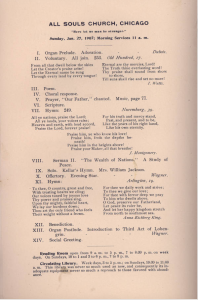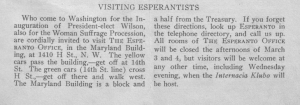The notes I used when I preached at Universalist National Memorial Church on Rally Sunday, September 8, 2013.
Rally Sunday marks a new year, therefore marks change.
Let me be clear, this is a new-year sermon.
You may hear another new year’s sermon in January, or at the beginning of Advent, but today is Rally Sunday and in our corner of Protestantism, it’s when the churches come back to full activity. It coincides with the new school year – back when the schools opened after Labor Day.
It has distant echoes of successful summer work at the farm. A change like harvest; with mixed images to life and death.
Of course, it’s easy to take the metaphor too far, but there’s a value – even joy, even a blessing – in marking New Years. The world’s Jews have just observed Rosh Hashanah, for instance.
But a new year is also an implied threat. A new start means change, and as we know, not all change is good. Birthdays can remind us about loose skin and loose teeth and lost ideals.
Change happens. I hate change.
This important fact cannot be understated. I’m happy in my marriage, work and home life, and I have a string of settled habits to prove it. There’s my favorite brand of tea, and a familiar path to work. I have a go-to place to order my clothes and shoes, when they need to be replaced. My husband Jonathan and I have the same basic order at our favorite Sichuan restaurant; being regulars, the waitress anticipates our order.
This might sound like boring routine to some of you, and perhaps it is. But stability allows for growth, contentment and happiness. I don’t have to think about some things that don’t need to be thought about. What can be wrong with that?
And I’m not averse to a risk, not afraid of a bit of experimentation – but I have standards for acceptable risk, and don’t stray from them. I used to think I was adventuresome, but that’s simply not true, and I’m OK with that.
I’m happy. Crises are few, resources are sufficient and I’ve lived long enough to know – or to think I know – what’s important and what’s not.
Not to brag, but to simply recognize (with a dose of thanksgiving) that I think my life is going pretty well right now, and perhaps I shouldn’t say any more. I don’t want to press my luck with you. I only want to set a scene.
Perhaps you, too, feel this way about your life. Or you did at one time.
If people live in an accustomed equilibrium, and it has its own rewards you can see why change need to prove its worth. It can even be a threat. After all, a comfortable, convenient seasons of life can be very short, and remembering harder times can wake them still feel very fragile.
Looking back, through my mind’s eye, to some of the people I’ve known – some still with us and some now gone – and I know they would have given anything for ordinary, boring, stable, peaceful happiness.
And perhaps that’s your story now because there too much – well, too much life going on right now.
Uncontented people may welcome change more, if the prospects are good.
Revolutionaries in every age know that, if you want to change the government, you need to appeal to those who have the most to grain in the new regime.
And if the current situation is really bad, anything will seem better. Even the unthinkably costly – one’s freedom, one’s home, one’s life — has the merit of being different than what exists now.
But it needn’t go that far. Like other important parts of our life — being born, falling in love, experiencing loss, approaching death – coping with the changes of life welcomes a theological response. And finding a healthy theological response in one of the reason’s this church exists.
Which brings us to that plain and obvious truth: Change is inevitable.
Whether desired or not, change is inevitable.
It comes for individuals and communities alike. We respond to changes outside us, and our responses change how we act. Even refusing to change makes us change.
The rent goes up: we move or economize, for instance. Family members get sick: we change our plans and routine to accommodate then. Government policy shifts: we rally supporters or re-frame further action.
This new year, in the autumn, is less about the endless possibilities of new life, and more about gathering harvests and taking stock of what we have done, and how far we have gone. How far we have gone, and what we hope to do or be, and how much time and energy we may have to accomplish it.
And for many of us who live in Washington, whose lives connect and revolve around issues of public policy, we know all-too-well that the product of our life work can be eroded or even swept away by powers and circumstances we cannot control, and may not even understand.
Everything that’s born must some day die. Willful passivity is no escape.
But we do have resources to make the best of it? And what about those challenges from scripture?
How we interpret change.
These are some of the images that speak to us from scripture. The two big images that pop out of the lessons today are (first) that God is like a potter who can choose to work on us, or discard the work put into us, and (second) that the basis of relationship an ideal follower of Jesus should have is as a student – “disciple” literally means “student” – who disowns family.
If you want to empty a church, start with this passage from the Gospel of Luke. In the beginning of the passage, Jesus was speaking to “large crowds” – and not like a celebrity motivational speaker. The gospel says these large crowds traveled with him. They were a community, and Jesus’ threatening message was about the basis and limits of that community.
But we hear these words differently than the first hearers would. The potter’s transforming art surely was more like we’d see an architect or engineer today. And the requirements of family unit then must have made Jesus’ demands particularly threatening, perhaps as a test or lesson.
Let’s consider the part of today’s gospel reading that causes the most heartburn:
Whoever comes to me and does not hate father and mother, wife and children, brothers and sisters, yes, and even life itself, cannot be my disciple.
But the direct way’s not how I think that should be read. It certainly isn’t the way it has been lived among faithful Christians for millenia. So, what do we do?
The approach to scripture in the liberal churches requires us to inquire broadly, even using our imagination and personal experience. Sometimes, we need to look at scripture sideways. If we don’t or won’t approach scripture broadly, it’s too easy to treat the Bible as a cookbook for lunatics – easy to discard as irrelevant – and we’d all be poorer for that.
Let’s take a slightly less alarming line from the same passage:
So therefore, none of you can become my disciple if you do not give up all your possessions.
Of course, some people have given up all their possessions, retired from the world and followed Christ. Or they gave up all and dedicated themselves to lives of perfect service. The early ascetics in the desert come to mind in the first case; Mother Theresa, say, in the second.
But they are so far in the minority that if these alone are Christian than there are nearly none in the world. (Some would agree with that assessment.)
In any case, we can change what acceptable behavior means. Slavery was once accepted; now it’s viewed with horror. The same goes for infanticide. Growing, if imperfect consensus, worldwide is for cooperative action in international conflict, democratic participation and accountability in government and access to basic education. And if the realization of these goals seems laughably far off, think about the state of affairs 50 years ago. Or 500 years. Or 5,000 years. The hard work is changing behavior in a way that means more blessing for more people.
I say this to remind us that we do not live in the same moral worlds that Jeremiah or Jesus lived in. I think we’re in a bigger, and in many ways better world than then.
Jeremiah’s ministry ended 2,600 years ago; Jesus’s about 2,000.
We do not just live in the same world as they do. Times changed.
For people new to Universalism, know that the affirmation of faith we read together a few minutes ago descends from one more than 200 year ago – I’ll link to it in the web version of this sermon, to be found later this week at the church website: universalist.org.
It ended on this high note:
“holiness and true happiness are inseparably connected, and… believers ought to be careful to maintain order and practice good works; for these things are good and profitable unto men.”
Holiness is a closeness and likeness to God, perfected in our behavior. We cannot be God, but we can can respond to life in God-imagining ways, and enjoy the true happiness that results from it. We can be wise and constant, a source of blessing, seeking and active. And minding God’s arc of time: expectant yet patient.
Jeremiah’s parable of the potter and Jesus’ call to follow him are both challenges – and not subtle challenges – that this closeness and likeness to God requires definitive and deliberate action.
Now, how do we put this into practice?
For one thing, we rely on other people to gauge what’s important and valuable – sometimes as a good example, sometimes bad.
The collective experience informs our personal experience, and – and this is a hallmark of the liberal church — our personal experiences – plural – inform our collective experience. The flow of influence is both ways.
Adaptability is key
The first response to change – wanted or not – is adaptability.
Adaptability for each of us personally. Adaptability in our households and family life. Adaptability in this church. Adaptability in this city and the nation. Together, this will make the world better than if we let the ages wash over us, helplessly.
That means looking to the various specialties we know in other parts of our lives – organizing, project management, communication, art, business, medicine, and others – with what they have to teach, not only how we run our church but about how we identify what’s important.
Theology in plain, living language
Another response is expressing what we believe in a plain, direct and lively way. This seems pretty basic, but like any developed culture, high-level theology has a specialized and often very technical language that can hide and confuse understanding instead of bringing clearer insight. If we talk about God, if we talk about our relationships, if we talk about our worship, if we talk about our lives, if we talk about our fears in a specialized language, it’s easy to believe that the answers we develop here are profoundly different than found in other
parts of our lives.
Speaking clearly and meaningfully about God and Jesus, human nature, the world and the future, sin, community and the future is longhand for the work of theology. It’s not short, but it’s something each of us can understand.
And we can use this voice as a tool for better theological life.
As I said at the start, I hate change, but that itself may change. A new day will come – a new day always comes – and we need to be ready for it.
Faithful and eager, prepared and awake.
Ready to be rallied for flexible and practical and public expressions of how faith should be lived. Join me, join me this Rally Sunday.












